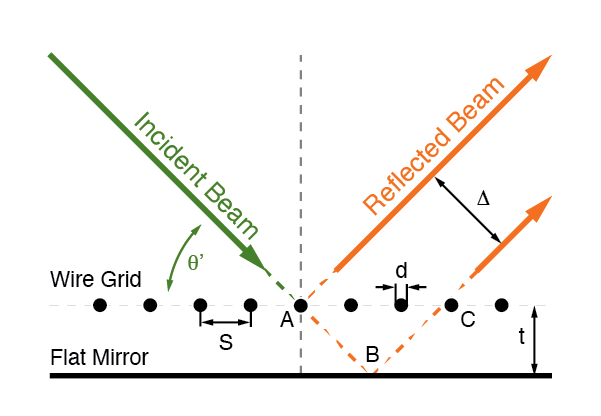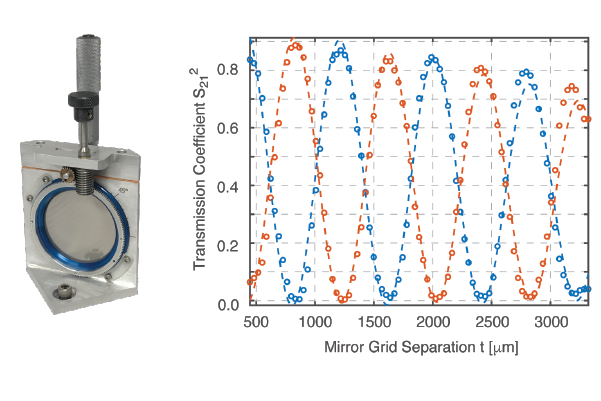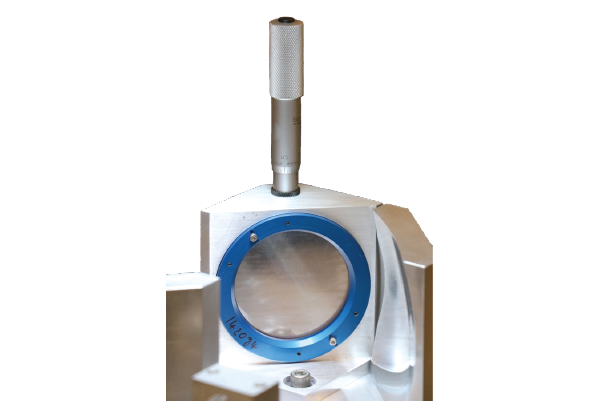
Theory of Operation
The principle components of the PTR are a wire grid and a flat mirror surface. The wire grid is oriented such that half of the power of reflected by the grid and the other half is transmitted through the grid and reflected by the flat mirror positioned behind the grid. The portion of the beam that is reflected by the mirror surface travels a slightly longer distanced introducing a phase shift with respect to the portion of the beam that is reflected by the grid. When these two beams are combined the polarization of the resulting beam can be changed by adjusting the distance between the grid and the flat mirror surface.

Generate any Polarization
The PTR allows converting any polarization into any desired polarization. For example, to the left measurements, taken at 263 GHz are shown of how a linearly polarized beam is converted into circular polarization and back to linear polarization, as a function of the separation distance.

Compact Design
The Bridge12 PTR is a very compact device, it only occupies a single 2.5 in. by 2.5 in. area of the QO board. A micrometer screw allows for precise adjustment of the distance between the grid and the mirror surface. Upon request this can be motorized allowing for remote operation.
Applications
Below are a few application examples of the PTR:
- QO Circulator: The PTR in combination with a wire grid can be used as a QO circulator in high-field EPR/DNP spectrometers.
- Convert Linearly to Circularly Polarized Beam: In magnetic resonance experiments the microwave-induced B1 field can be doubled by using a circularly polarized microwave beam instead of linearly polarized beam.
- Universal Polarizer: By adjusting the orientation of the grid (optional feature) the orientation of the E-field of a linearly polarized beam can be tilted by any angle.
Technical Specifications
- Operation frequency: 140 GHz to 2 THz
- Size: Compatible with a 2.5 in. by 2.5 in. grid of a QO board
- Mounting: 1/4 inch dowel pin and screw
- The micrometer screw can be replaced with a motorized control for remote operation.